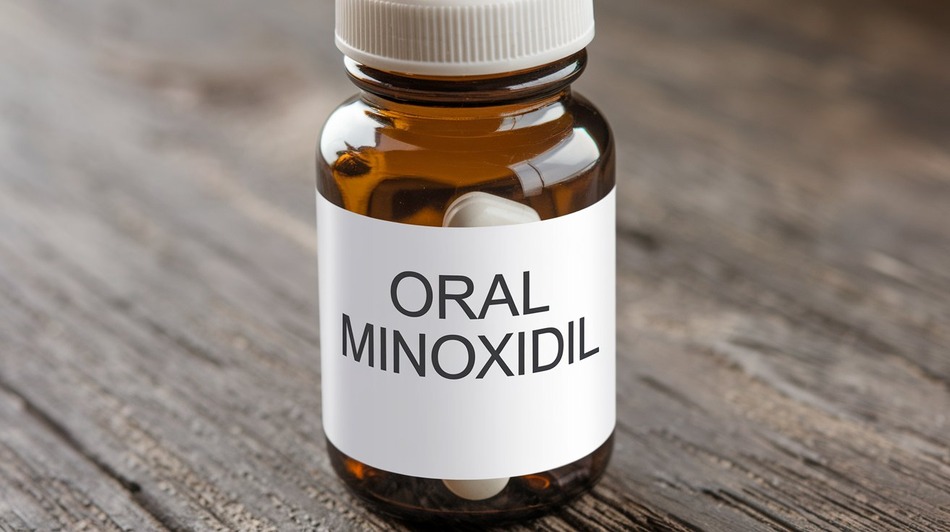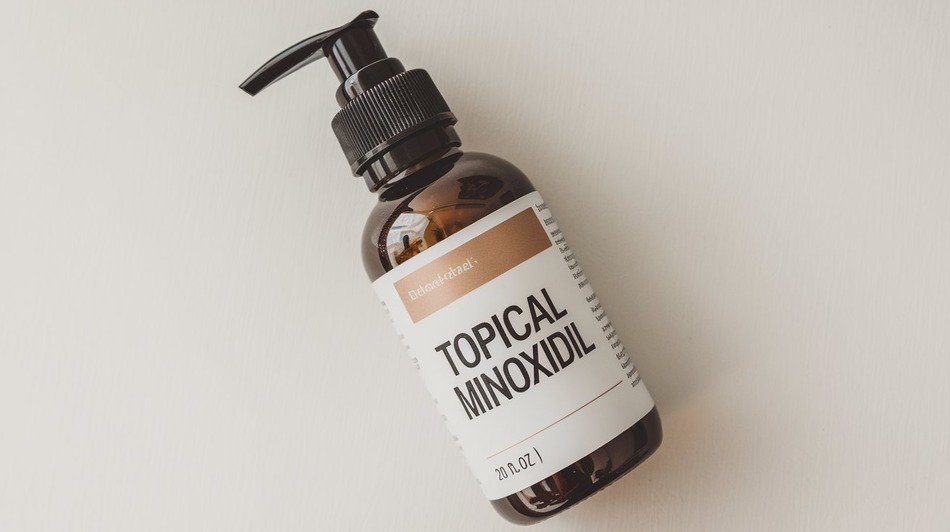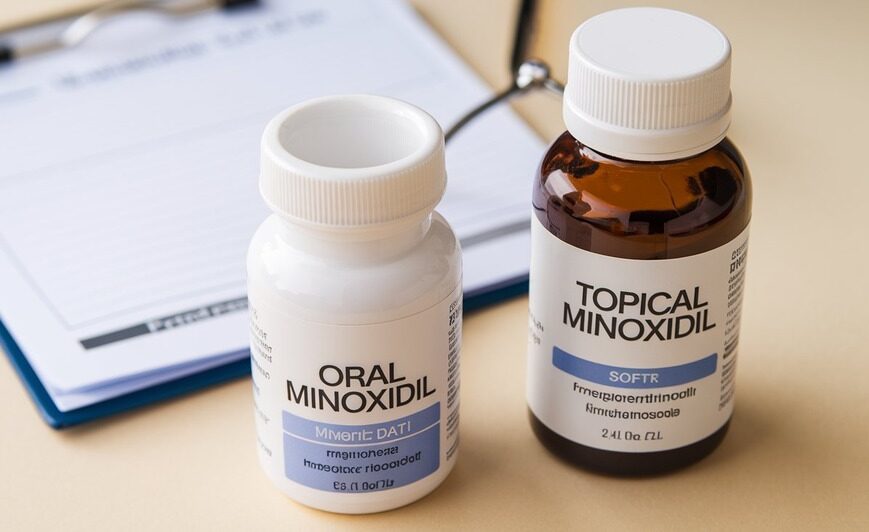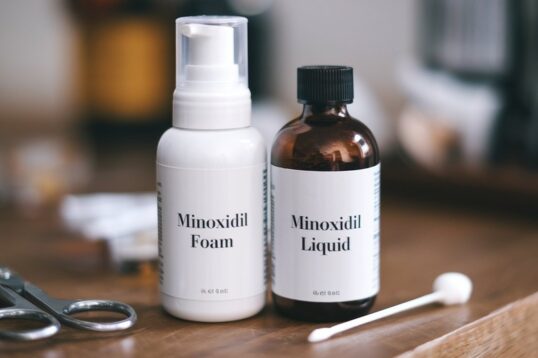Which Minoxidil Product is Best for You?
When it comes to managing hair loss, you might be wondering whether to use oral or topical minoxidil. If you’re struggling with hair loss, you’re not alone—many individuals are searching for the best strategies to help regain their self-confidence.
Before we dive into the specifics of these two treatments, let’s clarify what each option entails to reduce any confusion.
A tried-and-true treatment for hair loss is minoxidil.
It is the only OTC(Over-the-counter) remedy that has been given the go-ahead for hair regrowth. If you’ve noticed receding hairline or thinning areas, minoxidil may be the solution for you.
Oral Minoxidil: A Comprehensive Overview

What is Oral Minoxidil?
Oral minoxidil is primarily recognized as an antihypertensive medication, originally developed to treat high blood pressure.
In recent years, it has gained attention for its side effect of promoting hair growth, making it a treatment option for conditions such as androgenetic alopecia, commonly known as pattern baldness.
Although it is not officially regulated in the USA for treating hair loss, many doctors around the world consider it safe for use at lower doses.
Mechanism of Action
Oral minoxidil is an intriguing drug due to its unique mechanism of action.
It primarily works by expanding blood vessels. Anyone who has experienced the remarkable effects of injections that enhance libido, resulting from similar vascular expansion, can appreciate this function.
This improved circulation not only helps to lower blood pressure but also stimulates hair follicles to promote growth.
Studies indicate that oral minoxidil may be more effective than topical preparations, particularly in patients with low levels of follicular sulfotransferase activity, which is necessary to activate topical minoxidil.
For the best results, take oral minoxidil at the same time every day to maintain steady levels in your system.
Dosage and Administration
When it comes to dosage, here’s what you need to know:
Oral minoxidil is often prescribed at lower doses for hair loss. Follow your doctor’s advice and avoid increasing the dose without consulting them.
Side Effects
As with any pharmacological intervention, it is essential to be aware of the potential risks associated with oral minoxidil.
Common side effects of oral minoxidil include:
- Hypertrichosis: This condition is characterized by the uncontrolled growth of hair on the face and other parts of the body.
- Fluid Retention: This can lead to oedema, particularly in the lower limbs.
- Cardiovascular Effects: Patients may experience tachycardia (a fast heart rate) and postural hypotension, which can cause dizziness when standing up.
- Other Effects: These may include headaches, insomnia, and the worsening of conditions associated with angina pectoris.
Serious Side Effects
While less common, serious side effects can occur:
- Pericardial Effusion: This condition involves the accumulation of fluid around the heart, which can lead to cardiac tamponade.
- Hypotension: A significant drop in blood pressure can occur, potentially leading to dangerously low levels that may cause dizziness or fainting.
Contraindications
Oral minoxidil should be avoided by individuals with certain conditions, including:
A previous allergy to the drug.
Extensive cardiovascular diseases.
Pheochromocytoma (a cancerous tumor in the adrenal gland).
Pregnancy or breastfeeding, as there may be risks of defects in newborns, such as thick and hairy skin.
Modern medicine offers a valuable option for those suffering from pattern hair loss: oral minoxidil.
It is essential to understand its mechanism of action, appropriate dosages, potential complications, and when it should not be used.
You should never attempt to treat a medical condition without first discussing it with your doctor.
Since oral minoxidil was originally developed for blood pressure, regular checkups with your doctor are essential to monitor any cardiovascular effects.
Topical Minoxidil: A Comprehensive Overview

What is Topical Minoxidil?
Fewer people may be aware that topical minoxidil is used in the management of androgenetic alopecia, commonly known as pattern baldness.
It is available without a prescription and comes in both liquid and foam forms.
Typically, it is offered in 2% or 5% solutions to accommodate different client needs.
Mechanism of Action
So, how does topical minoxidil work for hair regrowth?
The treatment is applied directly to the scalp, stimulating individual hair follicles to promote hair regrowth.
The active ingredient enhances blood circulation, delivering essential nutrients to the hair roots, which is vital for hair health.
It is often recommended for those seeking natural solutions to hair loss, supported by testimonials indicating that hair can noticeably regrow after using this effective formula.
Application Guidelines
Apply topical minoxidil as described below, and be sure to maintain a regular schedule for the best results.
It is recommended to apply the product to a clean, dry scalp to achieve optimal outcomes.
For optimal absorption, make sure your scalp is clear of dirt, oils, or hair products before using the solution or foam.
Side Effects
As with any treatment, it’s essential to be aware of potential side effects:
- Scalp Irritation: Some formulations may contain propylene glycol, which can cause dryness or allergic reactions.
- Increased Shedding: Initially, you may notice increased hair shedding as some hairs transition from the resting (telogen) phase to the active growth (anagen) phase.
- Facial Hypertrichosis: This can occur if there is unwanted hair growth on the face.
Other possible effects include:
- Contact Dermatitis: Skin irritation or rashes.
- Erythema: Redness of the skin.
- Pruritus: Tickling sensations on the scalp.
Contraindications
Topical minoxidil is contraindicated in certain cases.
Avoid using it if you have:
Infections or inflammation on the scalp.
An allergy to minoxidil or any of its components.
A condition requiring concurrent use of topical or oral preparations containing minoxidil.
Topical minoxidil offers a reasonable solution for those suffering from hair loss.
To use it effectively, it is crucial to understand how the drug works, the conditions for which it is effective, its potential side effects, and the circumstances under which it is contraindicated.
For this reason, it is advisable to consult your doctor before starting any new treatment plan to ensure that it is suitable for you.
Comparison of Oral and Topical Minoxidil
| Feature | Oral Minoxidil | Topical Minoxidil |
|---|---|---|
| Formulation | Tablet | Solution/Foam |
| Primary Use | Resistant hypertension; off-label for hair loss | Androgenic alopecia |
| Efficacy for Hair Loss | Effective; may be superior in some case | Effective; well-studied |
| Application Frequency | Once daily | Twice daily (men); once daily (women) |
| Common Side Effects | Hypertrichosis, cardiovascular issue | Scalp irritation, itching |
| FDA Approval Status | Off-label for hair los | Approved for androgenic alopecia |
In summary, both oral and topical minoxidil serve as effective treatments for hair loss but have distinct applications, side effects, and usage guidelines. Oral minoxidil may offer advantages for certain patients but requires careful monitoring due to its potential systemic effects.
Combining Oral and Topical Minoxidil
Some individuals may wonder if they can use both oral and topical minoxidil simultaneously. The answer is yes, but it should always be done under medical supervision. Combining the two may enhance results for certain users.
Oral Minoxidil and Topical Minoxidil: Which One Works Better?
Both oral and topical minoxidil can effectively promote hair growth, but choosing the right one depends on individual needs and preferences.
Let’s break down the key differences to help you determine which option might work better for you.
Oral Minoxidil
Pros
- Generally considered more potent due to systemic absorption. Many users report quicker and more noticeable results, especially those who haven’t responded well to topical applications.
- Potentially fewer local side effects since it bypasses the scalp.
Cons
- Effectiveness can vary based on dosage and individual response. Monitoring by a healthcare provider is essential.
- Can lead to systemic side effects like increased heart rate, swelling, and unwanted hair growth in other areas. Regular monitoring is necessary.
Topical Minoxidil
Pros
- Widely used and effective for many people. It’s localized, targeting the scalp directly, which can reduce the risk of systemic side effects.
- Generally has fewer severe side effects. Local application minimizes systemic exposure.
Cons
- May take longer to see results, often requiring consistent use for several months. Some users experience skin irritation or allergic reactions.
- Common side effects include itching, redness, and dryness at the application site. Some users may find the routine cumbersome.
Usage and Convenience
Oral Minoxidil:
- Usage: Taken in pill form, usually once a day. This can be more convenient for individuals who dislike applying topical solutions.
- Considerations: Requires a prescription and regular follow-up with a healthcare provider.
Topical Minoxidil:
- Usage: Applied directly to the scalp, typically twice a day. This requires consistency and can be time-consuming.
- Considerations: Over-the-counter availability makes it more accessible, but adherence to the routine is crucial for effectiveness.
Ultimately, the choice between oral and topical minoxidil depends on your specific circumstances. If you’re not seeing results from topical treatments or experience irritation, oral minoxidil may be the better option for you. However, if you prefer a non-systemic approach and can commit to a routine, topical minoxidil might be the way to go.
Always consult with a healthcare professional before starting any new treatment to discuss your options and determine what’s best for your hair loss condition.
Conclusion
Both Oral minoxidil and Topical minoxidil serve as effective treatments for hair loss, particularly in cases of androgenetic alopecia. Oral minoxidil, originally designed for hypertension, has emerged as a promising option for hair regrowth, although it is not FDA-approved for this use in the U.S. On the other hand, topical minoxidil is widely available and directly stimulates hair follicles, making it a popular choice among users.
Each formulation has its own set of benefits and potential side effects, necessitating careful consideration and consultation with healthcare providers before starting treatment.
Ultimately, with appropriate guidance and monitoring, both forms of minoxidil can significantly enhance hair growth and improve the quality of life for those affected by hair loss.
FAQs
Can I use oral and topical minoxidil together?
Using both forms simultaneously should only be done under the guidance of a healthcare provider, as this may increase the risk of side effects.
What are the common side effects of oral minoxidil?
Common side effects of oral minoxidil include hypertrichosis (excessive hair growth), fluid retention, tachycardia (increased heart rate), and potential cardiovascular issues.
Are there any side effects associated with topical minoxidil?
Yes, topical minoxidil can cause side effects such as scalp irritation, increased shedding during the initial phase of use, and unwanted facial hair growth (facial hypertrichosis).
How should I apply topical minoxidil?
Topical minoxidil should be applied to a clean, dry scalp. For men, the recommended dose is 1 mL of solution or half a capful of foam twice daily. For women, it is typically applied once daily using the 5% foam.
Can I use oral minoxidil if I have high blood pressure?
Oral minoxidil is actually used to treat high blood pressure; however, it should only be taken under medical supervision due to its potential side effects and the need for careful dosage management.
Is There a Difference in Effectiveness Between Oral and Topical Minoxidil for Hair Loss?
Research suggests that oral minoxidil may be more effective than topical formulations for certain individuals, particularly those with lower activity of the enzyme that activates topical minoxidil.
Oral minoxidil works systemically, allowing it to reach hair follicles more efficiently, whereas topical minoxidil is applied directly to the scalp. As a result, those who do not respond well to topical minoxidil may find better results with the oral version. However, it is essential to consult a healthcare professional before starting any treatment to determine the most appropriate option for your specific needs.Who should avoid using oral or topical minoxidil?
Individuals with a history of hypersensitivity to minoxidil, severe cardiovascular conditions, or those who are pregnant or breastfeeding should avoid using these treatments. Always consult a healthcare provider for personalized advice.
How long does it take to see results from minoxidil treatments?
Results can vary, but users typically start noticing improvements in hair growth after about 3 to 6 months of consistent use for both oral and topical formulations.
What should I do if I miss a dose?
For oral minoxidil, take the missed dose as soon as you remember. If it’s close to the time of your next dose, skip the missed dose and resume your regular schedule. For topical minoxidil, apply it as soon as you remember but do not double the dose.
Can I stop using minoxidil once I see the results?
To maintain hair growth, it is recommended to continue using minoxidil. Discontinuing treatment can lead to the loss of newly grown hair over time.

